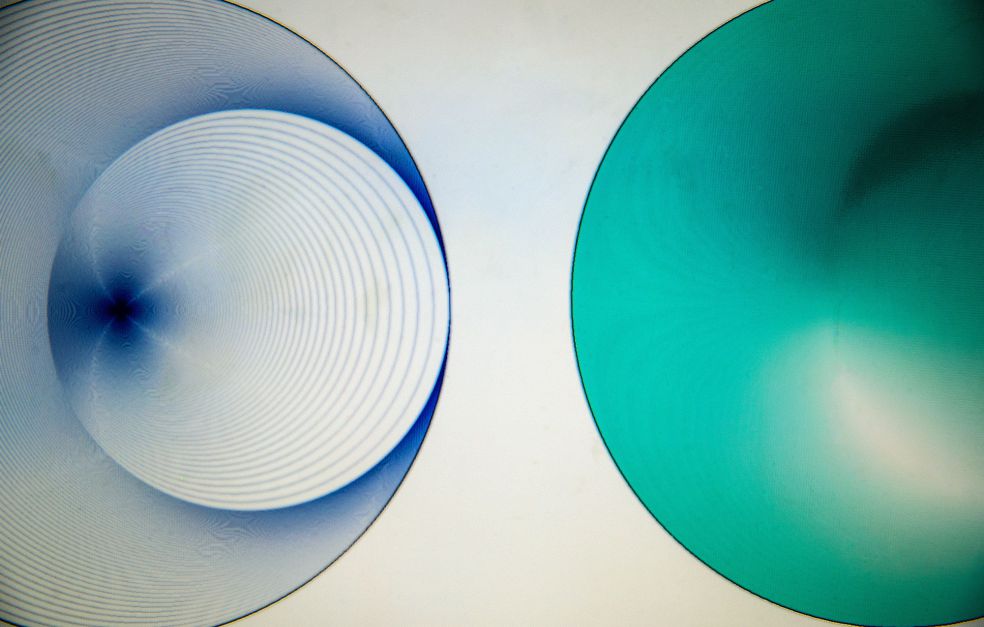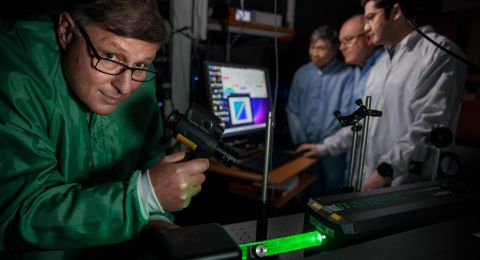Many of the theoretical models used by physicists to explain the workings of the world involve simplifications. That fact has inspired Fredrik Viklund to develop new mathematics to improve our understanding of natural phenomena.
Fredrik Viklund
Professor of Mathematics
Wallenberg Academy Fellow/Wallenberg Scholar
Institution:
KTH Royal Institute of Technology
Research field:
Mathematics, particularly stochastic conformal geometry
Physicists are good at describing nature’s tiniest constituents – elementary particles and the forces operating between them – using the “Standard Model”. The model, developed in the 1970s, is based on quantum field theory.
But except in certain specific cases, there are no exact mathematical descriptions of the randomly fluctuating fields that occur in quantum field theories. So the Standard Model includes a number of simplified calculations.
“The Standard Model works very well nonetheless. But we still lack a sound mathematical understanding, which is needed to enhance our prospects of developing new physics and mathematics,” says Viklund, who is a professor of mathematics at KTH Royal Institute of Technology.
Having received an extended grant as a Wallenberg Academy Fellow, one of his goals is to develop mathematics capable of precisely describing randomly fluctuating quantum fields.
“I’m inspired by problems in physics, but my research is curiosity-driven without any specific applications in mind. But there are many examples throughout history where earlier basic research has ultimately resulted in major breakthroughs.”
Differential geometry, for example, was a vital tool used by Einstein when he created his famous theory of relativity – one of the foundations of modern science.
Shrinking the mesh
Viklund and his colleagues are coming to grips with fluctuating quantum fields by studying a simplified model in which the field is defined solely in the intersecting points in a four-dimensional matrix, known as a lattice model. It gives only an approximation, but in return a model of this kind has an exact mathematical description and can be analyzed using probability theory.
Eventually, they want to refine the approximation by using mathematics to render the lattice increasingly fine-meshed, so that the distance between the intersection points eventually tapers to nothing. The aim is then to arrive at a precise mathematical construction and understanding of the fluctuating fields employed in physics.
Viklund began using this approach during his first period as a Wallenberg Academy Fellow, when he was primarily working on geometric curves that result from random patterns. These are known as SLE (Schramm-Loewner Evolution) curves.
“At that time we were working in two dimensions. Now we’re using four dimensions: three spatial dimensions plus time as a fourth. This makes it more complicated.”
The challenges involved in the project in no way deter Viklund; in fact they are what drives him.
“Research in mathematics is always incredibly difficult, and you can never really know in advance whether your ideas are going to work. This makes successes all the more gratifying.”
“The Foundation’s support enables me to focus on difficult, intriguing problems, and to hire more PhD students and postdocs who can help to drive the research forward. The contacts I have with Academy Fellows in other fields are also invaluable.”
Linking different worlds together
Research on SLE curves has also led him down another path. Working with a researcher at Massachusetts Institute of Technology in the U.S., he is exploring the mathematical relationship between the random world of SLE curves and a deterministic world, entirely devoid of random elements, involving curves of another kind, known as Weil-Petersson curves.
“It’s intriguing to link the two fields together, given that they involve such disparate mathematical structures, techniques and ideas. Starting out in the random world gives us new perspectives and new approaches to take into the deterministic world. This has enabled us to find completely new mathematical structures.”
According to Viklund, many of the most innovative developments in the mathematical field occur when researchers find a new, unexpected link between two branches of mathematics that were previously quite separate.
“It’s like a telephone line to a new continent. Suddenly you can make a call there and exchange ideas and experience.”
Powerful and esthetic
He has been interested in mathematics ever since his school days. After high school he studied computer engineering at KTH while taking individual courses in mathematics. When it was time to write his thesis he chose mathematics and SLE curves.
“The field was new and a little risky at the time. But it seemed exciting and suited the geometric way I see things – in images and shapes.”
Since then he has devoted all his energies to mathematical research, including some years as a postdoc in New York and as an assistant professor at Uppsala before returning to KTH.
“Mathematics fascinates me. It’s extremely powerful and gives us tools to think and discuss concepts that would otherwise be incomprehensible, such as infinity, for example.”
Viklund also considers the esthetic elements of mathematics to be important, although this can be hard to share with non-mathematicians.
“It’s a bit like seeing the beauty in an abstract work of art or a literary style. Mathematical esthetics concerns the elegance of the arguments and of the logical consequences – finding the right way of formulating the difficult concepts you want to communicate.”
Text Ingela Roos
Translation Maxwell Arding
Photo Magnus Bergström






